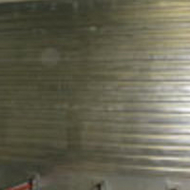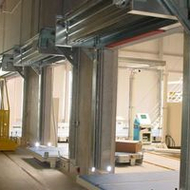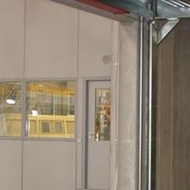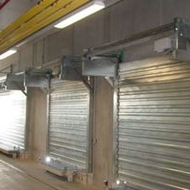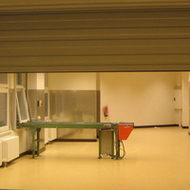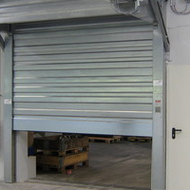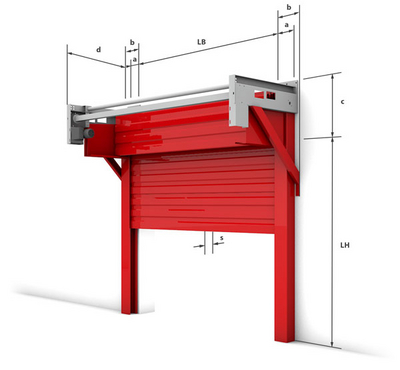
Product description
Space-saving and extra sturdy sheet metal closure for discontinuous and separate conveyor systems: Omnicompact features a segmented damper blade. This stacks up into the lintel area during closing. The system is suitable for very large openings, but is also available as a low-camber version that just requires a height of 560 mm. Omnicompact complies with the requirements of fire resistance classes EI 30 to EI 120 (tested according to DIN EN 1634-1) and is approved as a T30 and T90-gate.

Type | Vertical fire protection stacking door |
Closing direction | From top to bottom |
Fire resistance | T 90 • EI1 120 • tested according to DIN EN 1634-1 |
Re-opening | electromotive (standard) |
Conveyor system | Interrupted conveyor system • Continuous conveyor system • Continuous roller conveyor system • Continuous suspension chain conveyor • Continuous travelling carriages |
Downloads
Required wall quality | |
|---|---|
masonry | d ≥ 240 mm |
concrete | d ≥ 140 mm |
aerated concrete | d ≥ 200 mm |
reinforced aerated concrete | d ≥ 200 mm |
Technical feasibility | |
|---|---|
LH | (T30) 2000 mm - 6000 mm |
| (T90) 2000 mm - 4500 mm |
| (EI90) 2000 mm - 6400 mm |
| (EI120) 2000 mm - 4300 mm |
LW | (T30) 1000 mm - 9000 mm |
| (T90) 1000 mm - 4500 mm |
| (EI90) 1000 mm - 6700 mm |
| (EI120) 1000 mm - 4500 mm |

